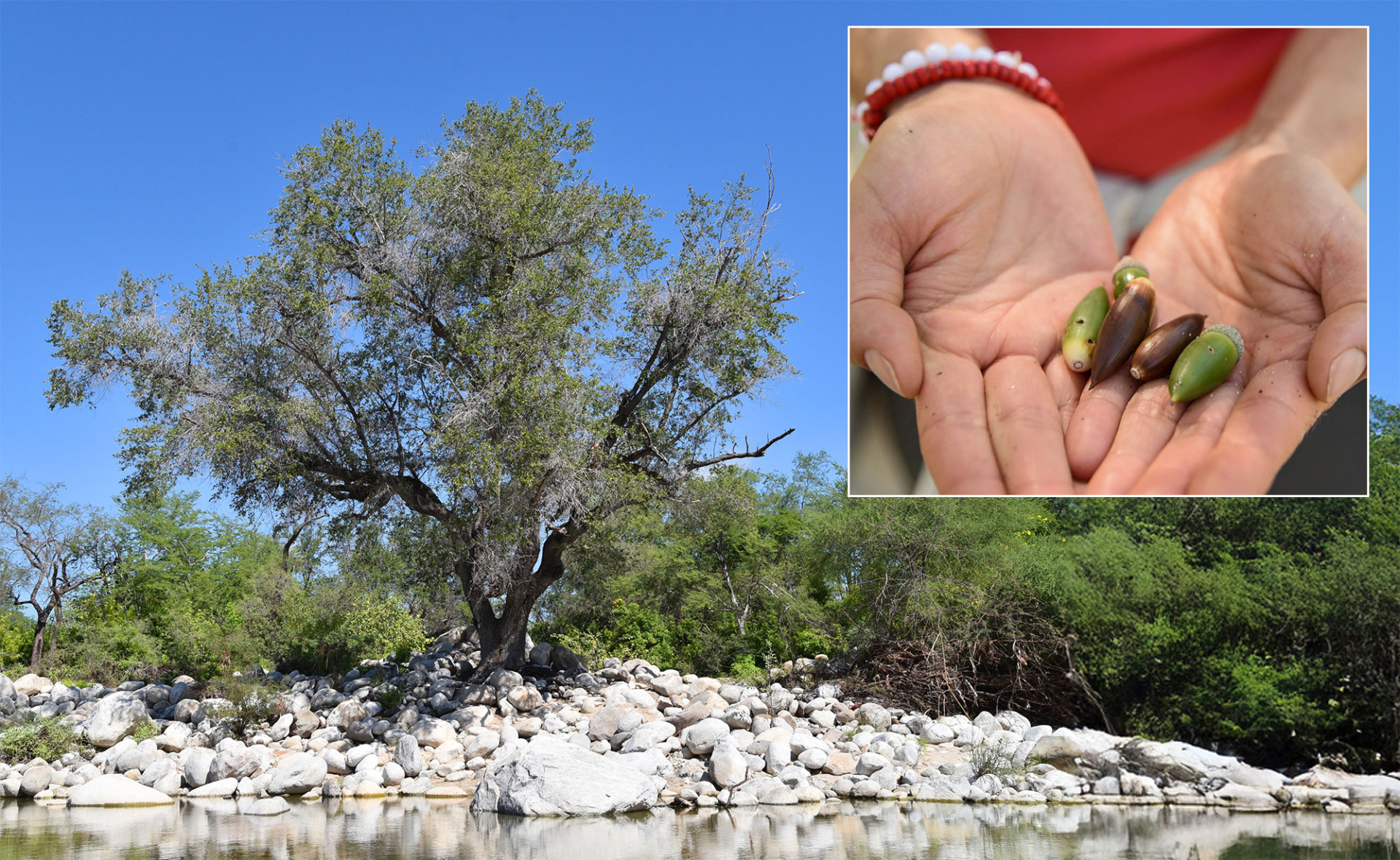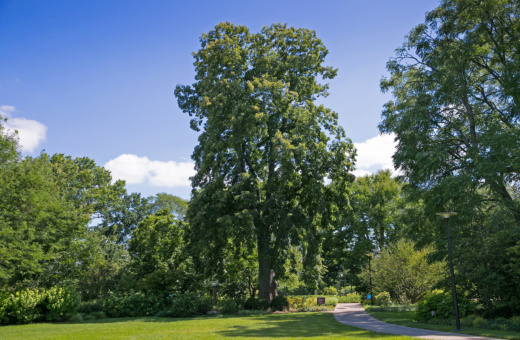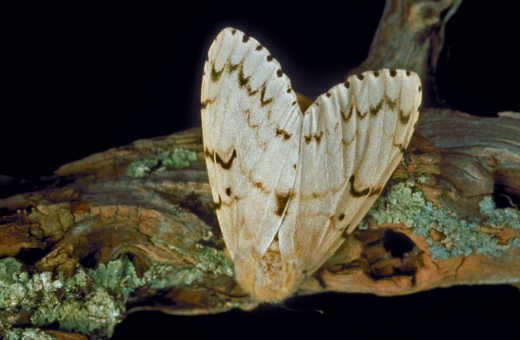The Wonder of the World’s Oaks
As winter gave way to spring, volunteers at The Morton Arboretum in Lisle tidied up clearings in its woodlands where staff had opened up the tree canopy to encourage oak seedlings to grow. Researchers in the Arboretum’s Global Tree Conservation Program were exploring whether drones could help find a rare and threatened oak species, Quercus brandegeei (above), in Baja California Sur, Mexico. In Arboretum labs, scientists studied how oaks evolved and what to do about declining white oaks in the Chicago region.
Oaks are a major focus of the Arboretum’s work in research, conservation, natural areas management, tree planting, and outreach. But why oaks? With 73,000 tree species on Earth, what makes the Arboretum such a strong champion of this particular group of trees?
“Oaks are super important trees,” said Andrew Hipp, PhD, senior scientist in plant systematics and director of the Arboretum’s Herbarium, and author of a new book on oaks. “They are important to the biodiversity and ecosystem function of northern forests around the globe.”
Oaks dominate ecosystems throughout much of North America—not just the red oaks and bur oaks of the Chicago region, but the evergreen oaks of Pacific Coast evergreen forests, the Eastern deciduous forests with their scarlet oaks and southern red oaks, and the southwestern oak‐piñon‐juniper woodlands. Oaks grow throughout the temperate regions of the world, including in the Mediterranean region, where oak bark provides corks for wine bottles, and in evergreen forests in southeast Asia.
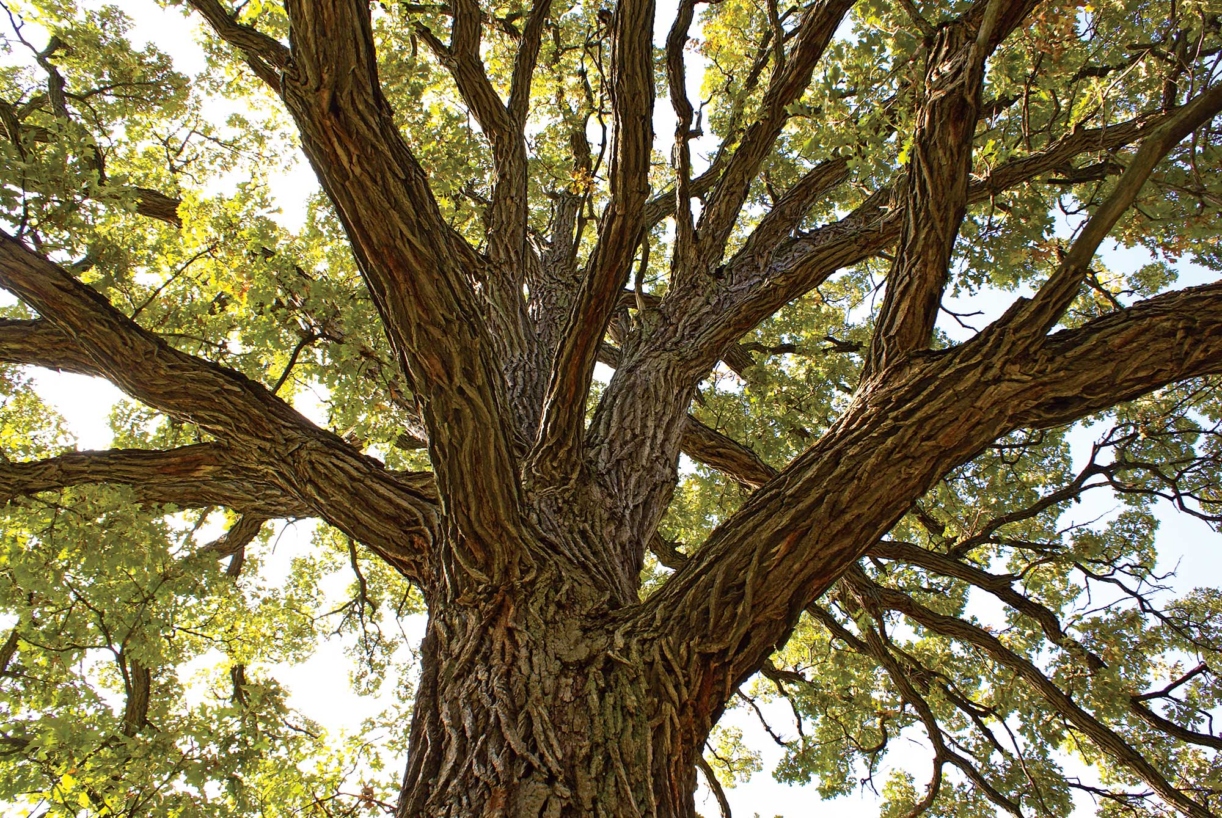
Oaks such as this bur oak dominate the natural forests of the Chicago region, where they support not only deer, blue jays, squirrels, and songbirds, but thousands of species of butterflies and other insects.
In the Chicago region alone, many species of plants and animals depend on oaks. Some are easy to spot: Deer eat acorns, and blue jays and squirrels not only eat them but disperse them by stashing them away for later, planting new oaks in the process. Other oak consumers are less obvious. Hundreds of species of moths and butterflies begin their lives as caterpillars that feed on oak leaves and overwinter in the crevices of oak trees’ bark. For songbirds looking for a meal, an oak tree is a likely place to find a tasty caterpillar. “There are thousands of species of insects that depend on oaks,” Hipp said.

Oaks are pollinated by the wind, which blows pollen from male flowers to female flowers, so their spring blooms don’t need to be showy enough to attract insects.
When Arboretum founder Joy Morton bought the land that would become the West Side in 1909, he noted that it included a stand of large old oaks—a remnant of the oak-dominated woodland and savanna that once met the prairie in the Chicago region. The tree in the Arboretum’s logo is a white oak. Today, about 60 oak species grow in the Arboretum’s Oak Collection, including 17 of the 21 species that are native to Illinois.
Oaks are the top tree group in the United States for providing ecosystem services such as capturing stormwater, storing carbon, cleaning air and water, and producing oxygen. A single large oak, it’s estimated, can intercept more than 5,400 gallons of rainwater and keep more than 1,000 pounds of carbon dioxide a year out of the atmosphere. Oaks are second only to pines in their total economic value to the country.
Yet oaks are under threat. Of the approximately 430 species of oaks worldwide, about 31 percent are threatened with extinction, according to the Conservation Gap Analysis of Native U.S. Oaks and the Red List of Oaks—both reports compiled by Arboretum scientists and staff. . In the United States, 28 of the country’s 91 native oak species are of conservation concern due to loss of habitat, climate change, and other factors. Oaks are also in peril from diseases such as oak wilt and from a changing climate that creates new opportunities for insect pests.
Species native to the Chicago region such as white oak and bur oak are not threatened with extinction, but they are not thriving. The region has only about 17% of the oak ecosystems that were here before European settlement in the early 1800s. In the remaining oak woodlands, oaks are not successfully reproducing. “In many places, you see a lot of big old oaks, and the forest floor can be carpeted with seedlings after a mast year, but you often don’t see a single oak sapling,” Hipp said. “The oaks are being outcompeted by more rapidly growing species.”
If young oak trees don’t grow up to replace old oaks as they come to the end of their lives, it threatens the future of the many other species that depend on them. It’s not just a problem in Chicago’s forest preserves. In Baja California Sur, Mexico, Quercus brandegeei trees are also failing to reproduce, which is one reason they are so hard to find.

The endangered arroyo oak (Quercus brandegeei) has a better chance to survive in Baja California, Mexico, through a partnership of local ranchers, scientists, and conservationists working with the Arboretum’s Global Tree Conservation Program.
Those threats have galvanized a wide range of actions by the Arboretum. In the Chicago region, the Arboretum’s Chicago Region Trees Initiative is a lead partner in the Oak Ecosystems Recovery Project, which aims to not only help oaks thrive in natural areas but to encourage the planting of oaks for habitat in communities. Many of the trees that CRTI supplies for community tree plantings are native oaks.
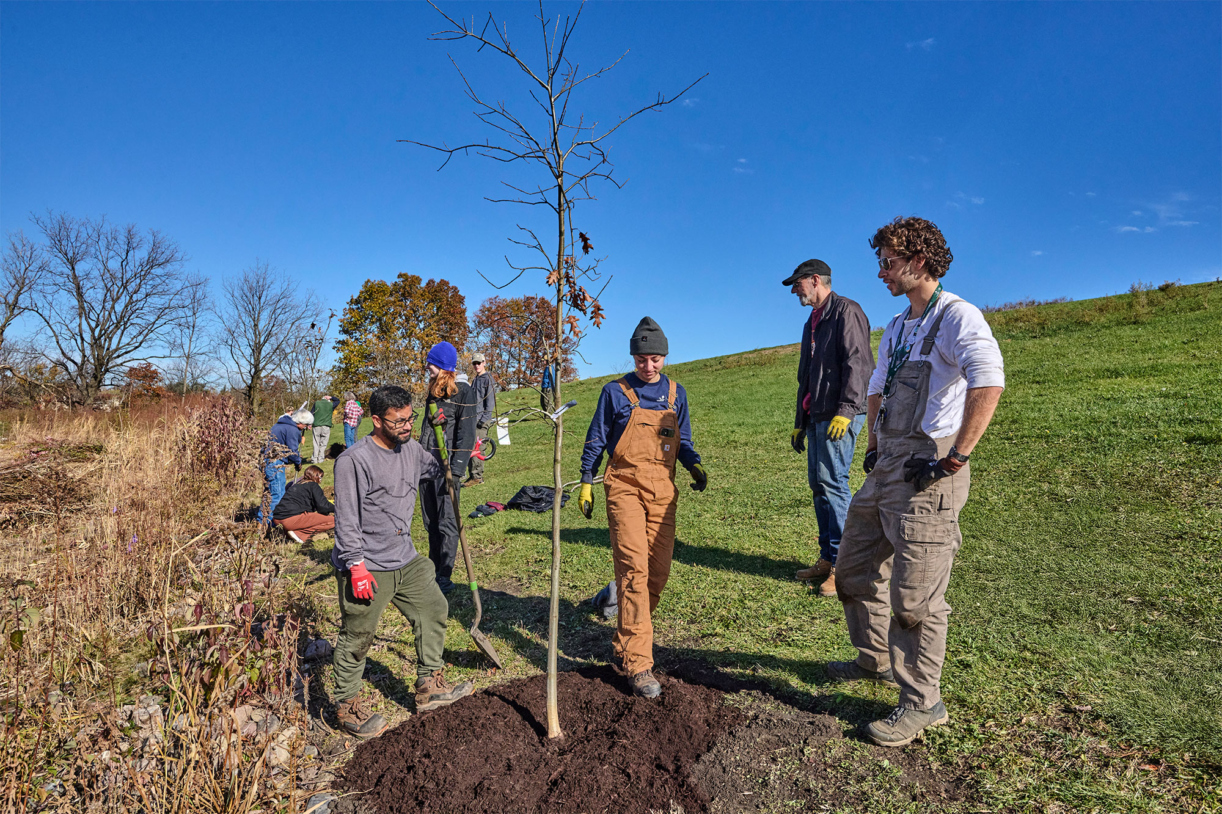
Many of the young trees planted by volunteers through the Arboretum’s Chicago Region Trees Initiative are native species of oaks.
The Global Conservation Consortium for Oak is based at the Arboretum. Oaks are a major focus of the Arboretum’s Global Tree Conservation Program–which works to encourage conservation of oaks in Mexico, Costa Rica, and other countries–and its Center for Species Survival: Trees, part of a network of such centers organized through the International Union for the Conservation of Nature.

Young saplings of endangered oaks are prepared for planting in their native habitat in Mexico through the Arbortum’s Global Tree Conservation Program.
At the Arboretum, its natural resources staff and volunteers have been working for more than two decades to improve the survival of young oaks in the East Woods by removing invasive and competing plants and making more space for oak seedlings. The area around the Schulenberg Prairie is being slowly and painstakingly restored into a savanna dominated by widely spaced oak trees. The Arboretum’s conservation groves, where genetically diverse groups of threatened trees are planted to help assure their survival, include the endangered maple-leaf oak of the Ozarks (Quercus acerifolia).
Oaks also are a major focus of Arboretum science. Hipp, for example, is leading investigations into the evolutionary history of oaks. He is part of a team that has traced oaks’ origins from a long-ago tropical forest in the Arctic down through North America and around the world, diversifying along the way into many species, from knee-high shrubs to towering trees.
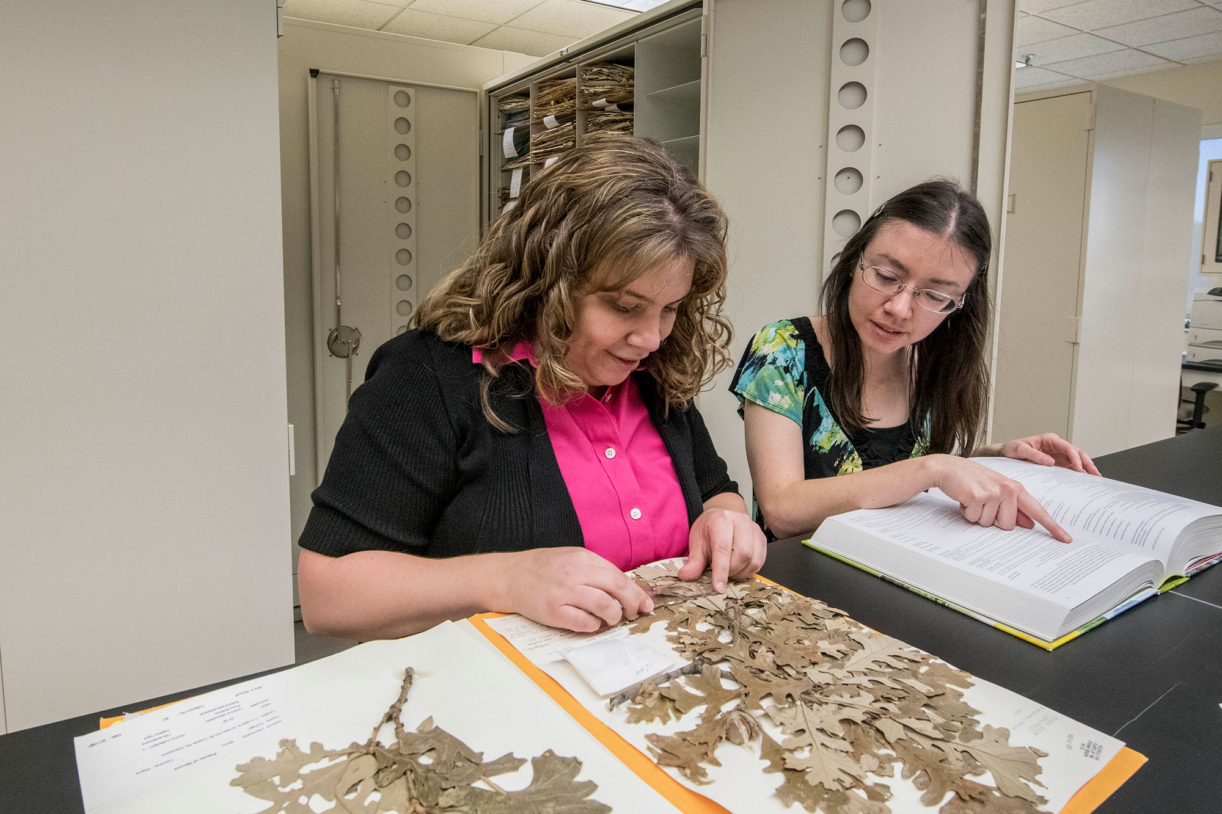
The extensive collection of dried plant specimens in the Arboretum’s Herbarium helps its scientists study the history, evolution, and ecology of oaks in the Chicago region and around the world.
That diversity has helped make oaks a model group that scientists study intensively for insights that also apply to other kinds of trees, just as the work of many scientists on mice has led to medical breakthroughs for humans. By studying roots, genes, and drought in oaks, Arboretum scientists hope to gain insights that will ultimately help other trees escape extinction, survive a changing climate, and live longer in harsh urban environments.
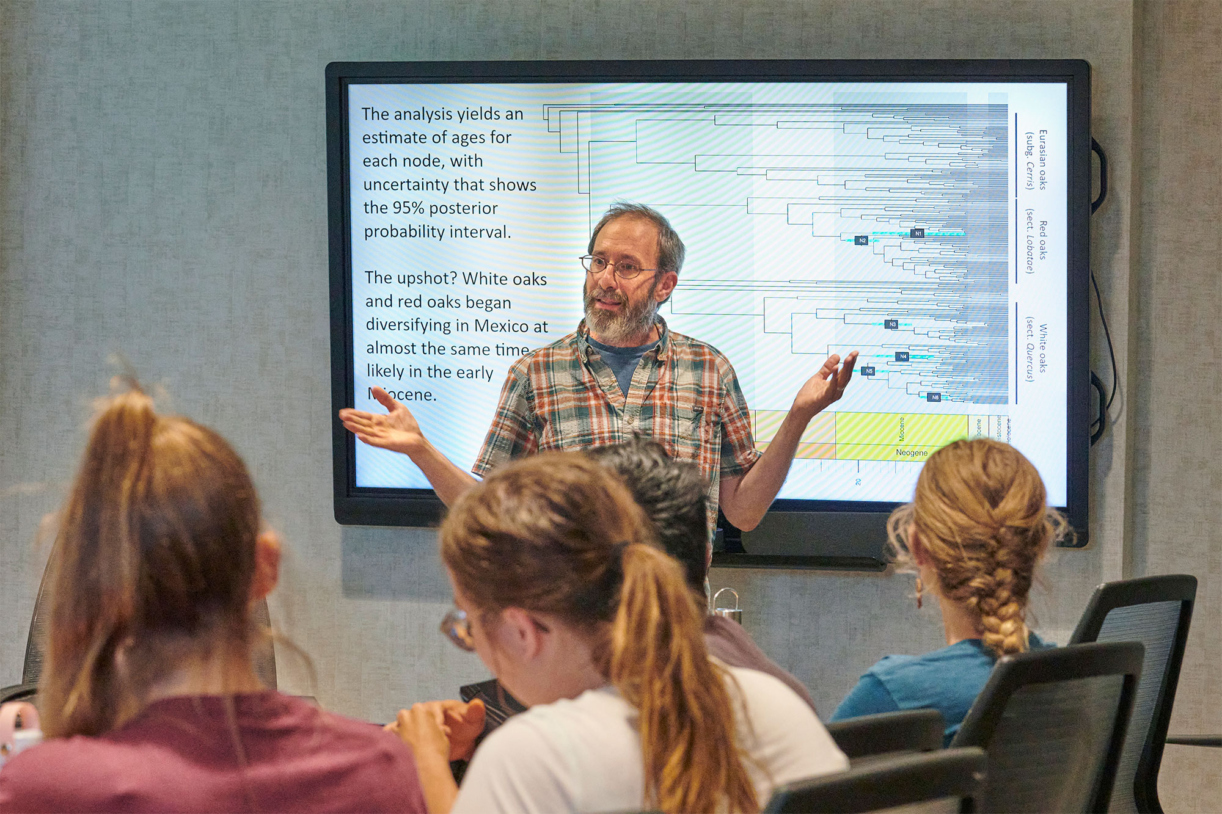
Andrew Hipp, PhD, who leads the Arboretum’s Herbarium and investigates the evolutionary history of oaks, is the author of a new book, Oak Origins: From Acorns to Species and the Tree of Life.
There’s another reason to focus on oaks: They’re fascinating. Hipp was a specialist in sedges when he came to manage the Arboretum’s Herbarium. “What I didn’t expect was getting into oaks,” he said, and finding them “confusing and exciting and interesting.” To communicate what he has learned and loved about oaks, he wrote Oak Origins: From Acorns to Species and the Tree of Life (University of Chicago Press, available in The Arboretum Store). Written for general readers, the book delves into the natural history of oaks and their place in the world’s ecosystems, as well as exploring how they have evolved.
“It’s a big, broad story unfolding over the course of more than 50 million years,” he said. “It’s a story worth telling, because the oak is a character that you will meet over and over again in your life.”
In spring, all the many kinds of oaks at The Morton Arboretum bloom just before their leaves open, allowing the wind to waft their pollen from tree to tree. Come enjoy the company of these majestic trees all through the year. To learn more, take a free online course, Why The Morton Arboretum is a Champion of Oaks.
